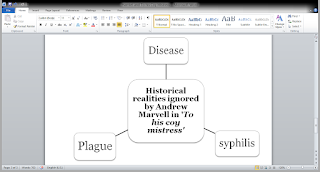Cultural Studies in Practice:
Earlier we discussed about introduction of
cultural studies and five types of cultural studies. Now, Let’s have a deeper
insight through cultural studies in practice.
Ruchi
Joshi’s blog on ‘Introduction of cultural studies’
Ruchi Joshi’s blog on ‘Five types of cultural
studies’
Cultural Studies derives from the
structuralism and post-structuralism, it tries to read everything in power
structure within the power itself.
Marginalization is a slippery term, is used
to define unequal power relations. If we are saying that now we are successful
in abolishing of marginalization, colonialism and even in other social
hierarchies, let me be very clear, we are merely in illusion. Marginalization
and colonialism exists even today but the problem is that earlier we were able
to distinguish this social turmoil and social evils which supports to power
structure that are hierarchies, class and class systems of society.
Marginalization still operates us in newer way. How? If we look at the HAMLET
by Shakespeare if we ever want to study two characters who are marginalized,
then suddenly two characters take place are Rosencrantz and Guildenstern. Even
if we ever wished to perform the play and we need to cut down some of the parts
of HAMLET hardly any other name will spark to us rather than Rosencrantz
and Guildenstern.
As we know, both the characters are
marginalized and even neglected too in the play by Shakespeare as thus also by
even Hamlet! It would be surprising to know lens of Cultural studies says that
both the characters are marginalized and pawns also in Tom Stoppard’s absurd
play ‘Rosencrantz and Guildenstern are dead.’ Though the whole play is narrated through the
perspective of Rosencrantz and Guildenstern, they are at the periphery.
Here, Derrida is piping relentlessly in my
mind that
“Center is paradoxically within the structure
and outside it…the totality, has its center elsewhere.”
Now, let us expand our response to HAMLET by
looking at a related cultural and philosophical manifestation from the
twentieth century. In Stoppard’s version, they are even more obviously two
ineffectual pawns, seeking constantly to know who they are they here, where
they are doing. What there they ‘are’ at all may be the ultimate question of this
modern play. In short, a cultural and historical view that was Shakespeare’s is
radically reworked to reflect a cultural and philosophical view of another time
– our own.
Thus, we allude to the Rosencrantzes and
Guildensterns, the little people who have been caught up in the corporate
downsizing and mergers in recent decades- the effects on these
Literature is criticism of life & mirror
of society but it proves right only when it reflects x-ray image of reality and
also of society. As Warner says,
‘History is textual and text is historical’ Major cultural
concern of ‘To his coy mistress’ is to study implied culture versus
historical fact.
How do we understand the ‘speaker’ in ‘To
his coy mistress’?
We know that the speaker is knowledgeable
about poems and conventions of classic Greek and Roman literature, about other
conventions of love poetry, such as the courtly love conventions of medieval
Europe, and about Biblical passages.
Jules Brody studies.....
‘implied reader
of this poem distinct from the ‘fictive lady’ – he would be ‘able to summon up
a certain number of earlier or contemporaneous examples of this kind of love
poem and who could be counted on, in short, to supply the models which Marvell may
variously have been evoking, imitating, distorting, subverting or transcending.’
-‘The Resurrection of the Body: A New reading of Marvell’s ‘To his coy
Mistress’
Why do we infer all these things?
We can say that the speaker and listener like
poet Andrew Marvell – are highly educated persons – those well read, whose
natural flow of associated images moves lightly over details and allusions that
reflect who they are – and expects listeners and readers to respond in a kind
of harmonic vibration because the speaker the speaker thinks in terms of precious
stones, of exotic and distant places, of a milieu where eating, drinking, and
making merry seem to be an achievable way of life.
What does it ignore from the culture?
·
It does not think of poverty, the demographics and socio-economic
details of which would show how fortunate his circumstances are.
·
It does not think of disease as a daily reality that he might face.
·
It shows that wealth and leisure and sexual activity are his
currency, his coin for present bliss.
Historical realities, a dimension that the
poem ignores
·
Disease
Real and
present disease
What has
been called the ‘chronic morbidity’ of the population.
·
Syphilis
Syphilis and
other sexual transmitted disease were as real a phenomenon in Marvell’s day as
in our era.
·
Plague
More ominous,
more wrenching, in its grasp of mind and body of the general population
Thank you.

No comments:
Post a Comment